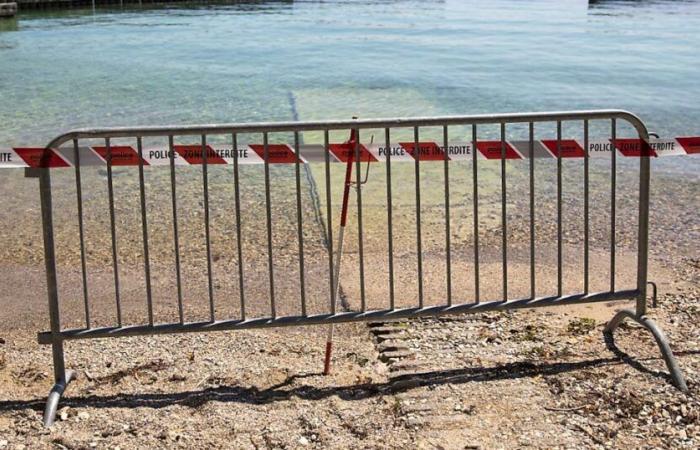Biologists from the University of Neuchâtel have identified the strain of cyanobacteria responsible for the death of six dogs in 2020 at the mouth of the Areuse (NE). National surveillance is recommended in order to mitigate similar events.
ATS
After the death of six dogs, who had eaten floating mats of cyanobacteria near the mouth of the Areuse, on the shores of Lake Neuchâtel, the University of Neuchâtel (UniNE) was mandated to investigate this case. “Toxicological analyses indicated that a derivative of anatoxin-a (ATX), a toxin of cyanobacterial origin, was the probable cause of their death,” the institution said on Tuesday.
From this observation, it remained for the team led by Professor Pilar Junier, director of the UniNE Microbiology Laboratory, to identify and characterize the responsible cyanobacteria. Genomic analyses indicate that the strain producing the toxin in the Areuse belongs to the same species as those isolated in New Zealand, the United States and Canada. It is called Microcoleus anatoxicus.
This species has unique properties that could explain why it proliferates so quickly and imposes itself to the detriment of all the other cyanobacteria in the Areuse. Compared to the rest of the Microcoleus genus, the toxin-producing strains have a 15% smaller genome, which could accelerate their growth, while making them more dependent on other microorganisms, according to the scientists.
The work, which was published in the journal Water Research X, was discussed on September 9 at a symposium on the issue of cyanobacteria organized by UniNE. Specialists from the United States and New Zealand shared their points of view on the phenomenon, alongside members of the Microbiology Laboratory.
This resulted in a recommendation for national surveillance of strains closely related to M. anatoxicus. The aim is to help predict and mitigate similar cyanotoxic events.
js, ats






